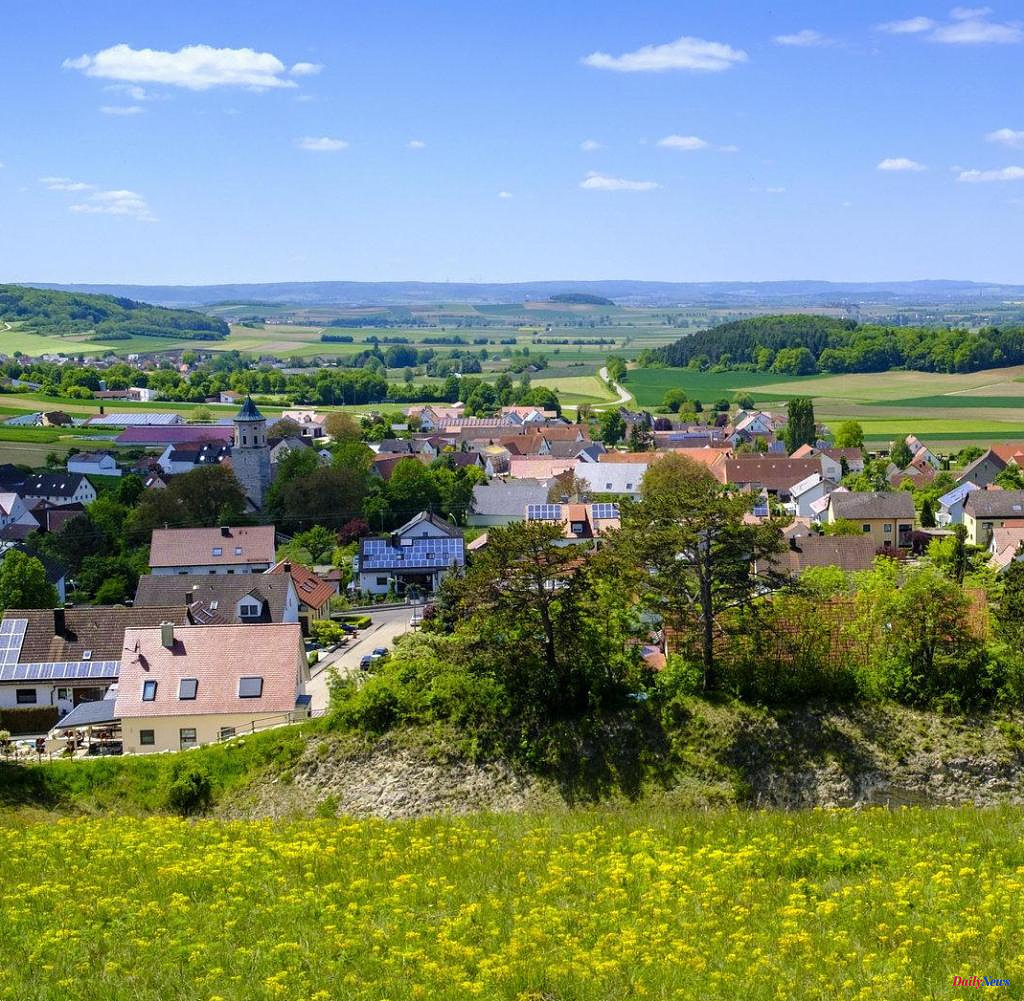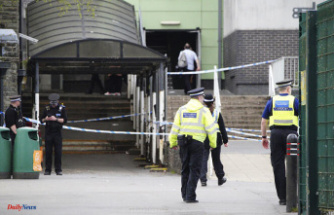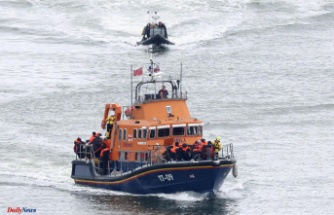The asteroid raced towards present-day Bavaria at 70,000 km/h. It crashed and wiped out all life in the area. It was all over after ten minutes, the landscape was newly "modeled": a crater with a circular diameter of 25 kilometers, the Nördlinger Ries.
Almost fifteen million years have passed since the impact. Today, the fertile giant crater in the west of the Free State prepares the ground for activities such as hiking and cycling. The edges of the crater are clearly visible, while a patchwork quilt of villages and fields spreads out in the shallow basin, white storks soar, fuchsias bloom and a fountain actually murmurs in a church.
The best hiking tour in the Ries is the almost 20-kilometer-long Schäferweg, starting at the Marienhöhe outdoor pool in Nördlingen. In the middle of the forest on the Galgenberg, which got its name centuries ago as a place of execution, the Hexenfelsen is the first stop on this hike. The isolated block of dolomite is part of the inner crater ring and may at times have protruded as an island from the long-gone crater lake.
Only expert eyes will discover deposits of the water on the base, as well as a little further on the rock masses of the Adlersberg. On the way, Geopark guide Carolin Schober-Mittring helps to sharpen the view. "Here we are moving through an open-air museum of geological history," she says, recalling that until the 1960s there was a misconception that the Ries was volcanically formed.
Today, the impact crater is considered one of the best preserved and explored in the world. "As a result of the impact, the structure of the rocks was completely changed and they were broken off with sharp edges," says the park guide. In addition, the world is upside down in the Ries, because: "The ejected older layers of rock lie on top of the younger ones."
On the way, a special loop on the Geotop Lindle educational trail leads to the wetland of a former quarry. It is the habitat of yellow-bellied toads. Next door, a viewing platform provides a view of the astronaut quarry, which is now private property.
“In August 1970, the astronauts on the planned Apollo 14 mission were in Ries for field training to learn in the crater what they need to be able to do on the moon,” says Carolin Schober-Mittring. "Astronauts weren't geologists, so they had to get a crash course in geology here." Even today, astronauts from the European Space Agency (ESA) occasionally complete geological training units in the Ries, according to the geopark's website.
A unique feature on the hiking trail is the suevite quarry in Altenbürg. Suevite was the most important impact rock in the Ries and building material for many buildings in Nördlingen. The glass bombs in the rock, called "Flädle", were created by the extreme heat from the impact. "It was up to 30,000 degrees," says Schober-Mittring.
The final section of the hiking trail back to Nördlingen is blocked by the Riegelberg. The rock slab of Upper Jurassic limestone slid from the rim of the crater into the giant crater that was being formed. The small massif is perforated by the Ofnet caves, where our ancestors from the Stone Age cavorted. Archaeological finds of 33 severed adult and child skulls from the Mesolithic (approx. 9700 years ago) were horrific.
Being active in the Ries also means pedaling the eastern cycle route from Nördlingen. 58 kilometers, largely through flat land, first to the fuchsia town of Wemding. This is where the fuchsias got their name from, the botanist Leonhart Fuchs, who lived in the 16th century (1501-1566).
From May to September, fuchsias bloom everywhere in flower pots and boxes, and the flower pyramid on the market square is also decorated with them. The cycle route has its very own sound effects. The wind drives through apple trees and spelled fields and in the Maria Brünnlein pilgrimage church on the north-western edge of Wemding, water gurgles, which believers tap off in hopes of healing powers.
The storks clatter in the beer town of Oettingen. Tour guide Silke Fackler puts the number between February and August at 62. Last year 69 young storks were added. The extremely heavy nests are not welcome everywhere.
Oettingen's outskirts touch the Wörnitz, which Silke Fackler has already navigated in a kayak. It is one of the slowest-flowing rivers in Bavaria, meandering through the Nördlinger Ries and flowing into the Danube in Donauwörth. "In the early morning hours, when the fog rises, there is almost a bit of a jungle feeling."
Whether on foot or by bike - when returning to Nördlingen, the "Daniel" sets a landmark. That's the name of the tower of St. George's Church, on which 350 steps lead. He is the throne above the Ries. If you step out there on the tower gallery in windy heights, you have a magnificent view over the sea of tiled roofs of the city and the wooded rims of the crater in the distance.
The cosmic catastrophe that gave birth to new life millions of years ago is a godsend for the area and visitors.
Arrival: With the ICE to Donauwörth, with the regional train to Nördlingen. The nearest motorway is the A7 (exit Ellwangen).
Destination: The Geopark Ries is largely located in Bavaria and to a small extent in Baden-Württemberg. It has a diameter of 25 km and an area of around 1750 km², which is roughly twice the area of Berlin. Larger cities nearby are, for example, Augsburg in the south or Ingolstadt in the east.
Hiking and cycling: There is a large selection of routes on the Geopark website: geopark-ries.de/wander-und-radwege.
Tip: The approximately 2.7 kilometer long tour of the city wall in Nördlingen is covered almost throughout and is therefore also a bad weather destination.
Ries crater museum: The museum in Nördlingen sheds light on the background to the formation of the Nördlinger Ries. The showpiece is a piece of moon rock from the US space agency. Information at: rieskrater-museum.de
Information: noerdlingen.de/tourismus
Hiking has been experiencing a real boom for a number of years, including among younger people. But hiking can also be dangerous, especially if you want to climb the mountains with the wrong shoes. The right preparation is everything here, too.
Source: WELT/ Peter Haentjes












